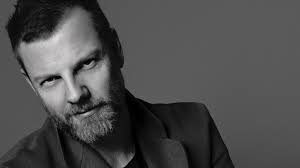In 1997, Acne Studios cofounder Jonny Johansson created 100 pairs of raw denim jeans with red stitching and gave them away to friends and family. Wallpaper* and Vogue Paris quickly picked up on the popularity of the jeans and Acne Studios rapidly expanded their fashion offering outside of denim. Twenty-five years later the company has expanded into designing men's and women's ready-to-wear fashion, footwear and accessories including handbags, small leather goods, and eyewear. An interview with the designer himself about the 2022 collection provides a sneak peak into the world of high fashion.

Acne Studios Men’s SS22 Q&A with Jonny Johansson
Can you tell us about the background to this collection?
This is a very personal collection for me. Because of lockdown, I’ve had more time for dreaming, and for getting closer to making clothes. I’ve had the time to work on design, and these elements
from my subconscious are coming to the forefront of my mind.
What are these elements?
Much of it is my memories of music. There are no literal references in this collection to any particular rock stars or bands. It’s more that I’m referring to the library in my mind, of my own
memories and experiences. I like using this subconscious world as an influence, with its glimpses of details that come together to make something new.
Tell us about the contrasts in the collection.
I love the juxtaposition between hard uniforms and pieces that are softer or more feminine. I have such respect for traditional menswear, but I always think there’s something about it that needs to
be questioned and changed. In this collection, it’s about questioning the power of this clothing, subverting it, and contrasting it with pieces that are super soft and fluid, elaborate and patterned. It’s a way of dressing that’s long been part of counterculture, and it is something that’s still relevant today.
Can you tell us about some of your favourite pieces?
I love the tailored pieces that at first look super normal, then you realise there’s the sheen of Lurex in it, like a wool shorts suit, or flared tailored pants with a pinstripe of Lurex. Those pants are matched with a knitted tank that’s purposefully destroyed with large holes across the front, which have been embroidered with different colour threads. I love how poetic the piece is, and these two pieces together capture the mood of the collection for me.
Talk us through the other garments of authority that you subvert.
Some are already part of the language of counterculture, like the bomber jacket, which originated as a military garment. We’ve subverted it here by embroidering it with symbols of fertility. We’ve
also taken the structured shape of a police leather jacket, exaggerating, and playing with its strong shoulders and utility pockets. We’ve matched it with a pair of striped wool bellbottom pants to highlight the contrast between tough and fluid.
What about the flares?
I think that flares have always been worn by people who resist authority. Wearing flares is still rebellious in a weird way. For my son and his friends, wearing flares would be to say, ‘fuck off’. It means, I don’t agree. It means, I have another opinion. I am very interested in how this trouser shape can still carry such clear meaning of an alternative way of being.
Can you tell us about the collaboration with the artist Rabin Huissen?
I wanted to have something that felt really human in the collection. Rabin makes these pieces using images of his own body, and to me they look like human souls. It’s as if you’ve stripped everything away and gotten to the core of what really matters. We used a print of his work on a long tunic so that we could do his work justice.
Tell us about the accessories.
There’s lots of jewellery in the collection, that I wanted to feel like pieces you collect on a year of backpacking. Boots look tough, but either have high stack heels, or soles of cork and marbleised
rubber. Berets are a symbol of resistance, and many of the bags borrow from women’s shapes to consolidate this mix of masculine and feminine.
Photo source: The Business of Fashion (c. 2021)
